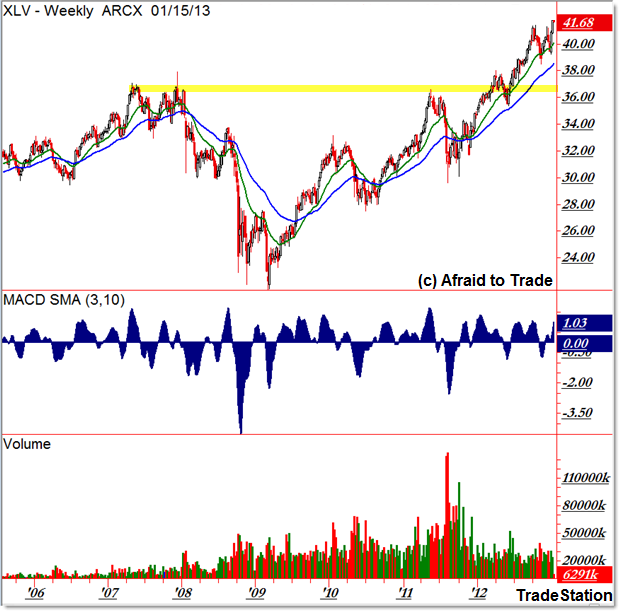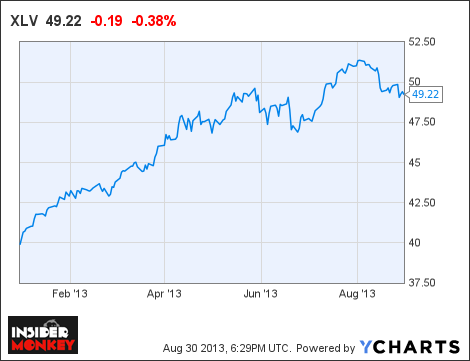XLV Is Your Best Bet In Health Care ETFs
Post on: 16 Март, 2015 No Comment

The health care sector ranks second out of the ten sectors as detailed in my Sector Rankings For ETFs and Mutual Funds. My fund rating methodology is detailed here .
Investors seeking exposure to the health care sector should buy one of the Attractive-or-better rated ETFs or mutual funds from Figures 1.
* Best mutual funds exclude funds with TNAs less than $100 million for inadequate liquidity.
Sources: New Constructs, LLC and company filings
Health Care Select Sector SPDR (XLV) is my top-rated Health Care ETF and ICON Funds: ICON Healthcare Fund (ICHCX) is my top-rated Health Care mutual fund. Both earn my attractive rating.
SPDR S&P Biotech ETF (XBI) is my worst-rated health care ETF and Prudential Sector Funds, Inc: Prudential Jennison Health Sciences Fund (PHLAX) is my worst-rated Health Care mutual fund. XBI earns my dangerous rating and PHLAX earns my very dangerous rating.
Figure 3 shows that 73 out of the 339 stocks (over 55% of the total net assets) held by health care ETFs and mutual funds get an attractive-or-better rating. However, only four out of 21 health care ETFs (less than 48% of total net assets) and 4 out of 92 health care mutual funds (less than 1% of total net assets) get an attractive-or-better rating.
The takeaway: too many mutual fund managers allocate too much capital to low-quality stocks and too many health care ETFs hold poor quality stocks.
Figure 3: Health Care Sector Landscape For ETFs, Mutual Funds & Stocks
Sources: New Constructs, LLC and company filings
Investors need to tread carefully when considering health care ETFs and mutual funds. ETF investors appear to be much more sophisticated than mutual fund investors as 48% of health care ETF assets are in the attractive-rated ETFs while 0% of mutual fund assets are the attractive-rated funds.

Amgen, Inc. (AMGN) is one of my favorite stocks held by health care ETFs and mutual funds and earns my very attractive rating. AMGN’s growth in after tax cash flows (NOPAT) is impressive: 15% CAGR since 1998. Despite this impressive track record, AMGN’s current price to economic book value ratio is only 0.7, which mean the current valuation of the stock implies AMGN’s NOPAT will permanently decrease by 30%. This disparity between past performance and expectations means excellent risk/reward for investors.
Sarapta Therapeutics (SRPT) is one of my least favorite stocks held by health care ETFs and mutual funds and earns my very dangerous rating. It currently has negative economic earnings. and a free cash flow yield of -11.1% is not exactly attractive. To justify its share price of
$24.68, the company must grow revenues by 20% compounded annually for nearly 20 years while also raising its ROIC from -43% (as of fiscal year 2011) to +50%. Those are high expectations for a company with no recent history of economic profitability.
382 stocks of the 3000+ I cover are classified as health care stocks, but health care ETFs and mutual funds hold only 339 stocks.
Figures 4 and 5 show the rating landscape of all health care ETFs and mutual funds.
Figure 4: Separating the Best ETFs From the Worst ETFs














